
Bored of kiting with a twintip? Maybe switching to kitesurf strapless can make a difference! Together with Carla Herrera (vice-world champion strapless kitesurf 2018) we prepared our guide to make your step from twintip to surfboard as easy as possible.
And if you are looking for some kitesurf strapless course in Tarifa, you are at the right place! Get in touch with us!
Before to start with kitesurf strapless, would be great if you can already ride on a twintip and go upwind. This will make the whole task much easier!
If your goal is to progress quickly and reach a good level, we recommend you to make the transition from the twintip to a surfboard, being able to ride toeside, pop / jump and it will also help you big time if you can backroll / frontroll in both directions.
Needless to say, in your first sessions you'll get tired of doing body-drag to recover your board, so be sure to have it under control!
It sounds like a lot, but it's not very difficult to reach this level with the twintip! If you step from twintip to strapless with these basic notions, your progression will be much faster than if you try to start directly with a surfboard under your feet.
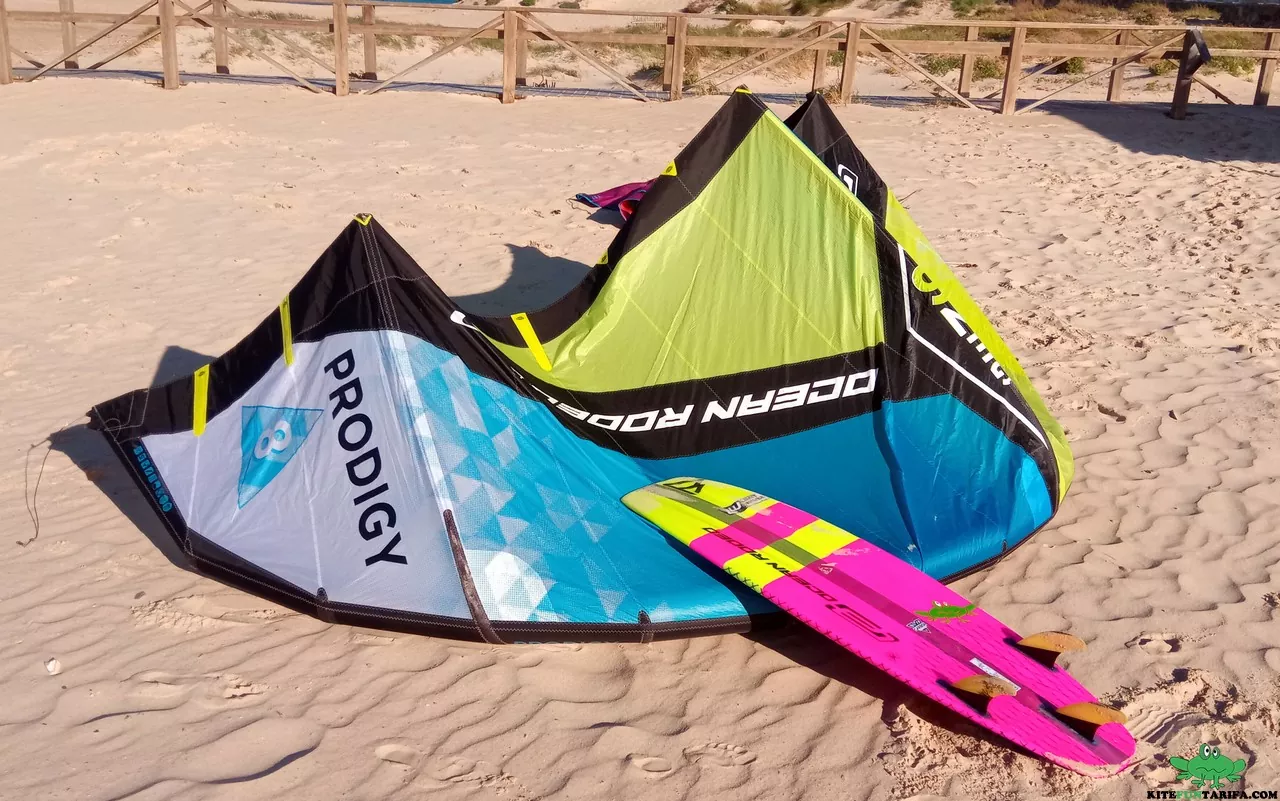
Another factor when you start with strapless riding is your equipment. To choose your kite is very important to know in what type of spot you are going to ride and what kind of riding you want to perform. For example, a "C" shape kite is not appropriate for strapless kitesurf! The best kite shape for strapless are delta shape, as they are powerful, fast and easy to relaunch from the water.
It will also be very useful if the kite is well built and resistant, because if you go wave riding and crash your kite you need something that holds up well! Also helps a kite + bar with big depower.
Using the right board is also very important in your learning curve. Kitesurf strapless has two disciplines, one is wave surfing and the other is strapless freestyle. Before choosing the right board for you, the first question you have to ask yourself is what kind of conditions you find in your spot regarding wind speed and sea conditions.
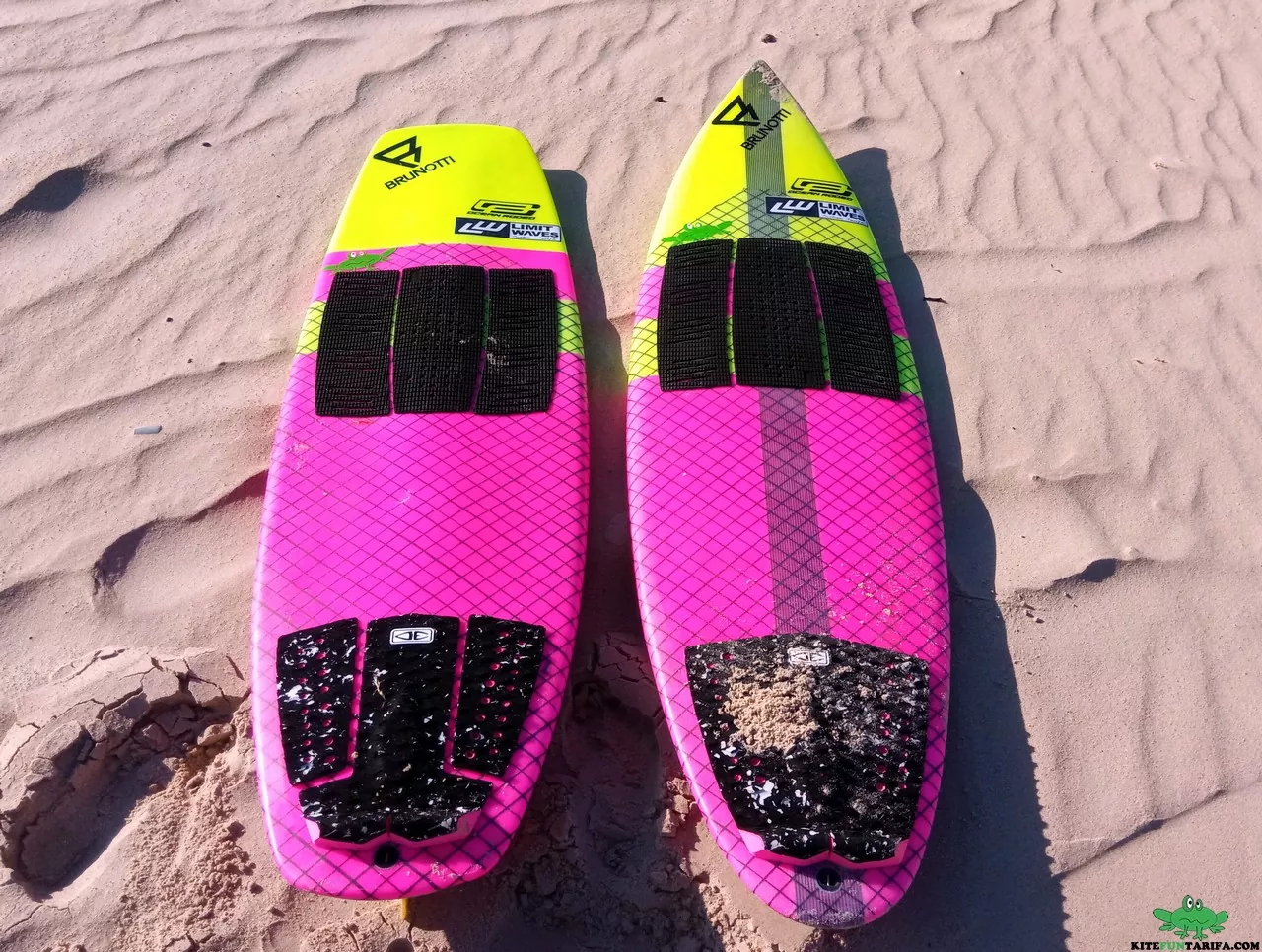
If your choice is wave riding, the best option to start with will be a board that has more volume than advanced riders, as this extra volume will help you to stay in the wave and focus on your body and kite.
Kite surf boards are usually smaller than regular surf boards, so it's not a good idea to use your surf board for kiting! (besides that it is not reinforced to use it with the kite). Important to use leash ONLY if your board can end up in stones, as this element can be very dangerous depending on the conditions.
If your choice is strapless freestyle you'll need a noseless board. They usually comes with channels under, they are wider and have some more rocker.
Pad Vs Wax: Boards tail comes with pad and for the front part there is division of opinions, some riders put wax and others pad. Normally, the pad is easier to ride with, so it would be what we recommend for beginners as it always has the same grip, it does not need maintenance, you do not have to buy wax and look at the water temperature! In addition, is infinitely cleaner.
The advantage of wax is that it gives you a more sensitive board and with which you feel a better connection, but it has many drawbacks as we have already said.

Fins set up:
Depending on the spot and preferences, you can choose between:
•3 fins (thruster). It is a good setup for medium waves and offers a good grip balance. It is usually what is used to do strapless freestyle.
•4 fins (quad). 2 fins on each side without a central one. Turns are faster and in big waves is not so gripy..
•5 fins. It offers a lot more grip in waves, but if they are not big and powerful it might be too much!
The best advice is to go out there and try what works best for you!
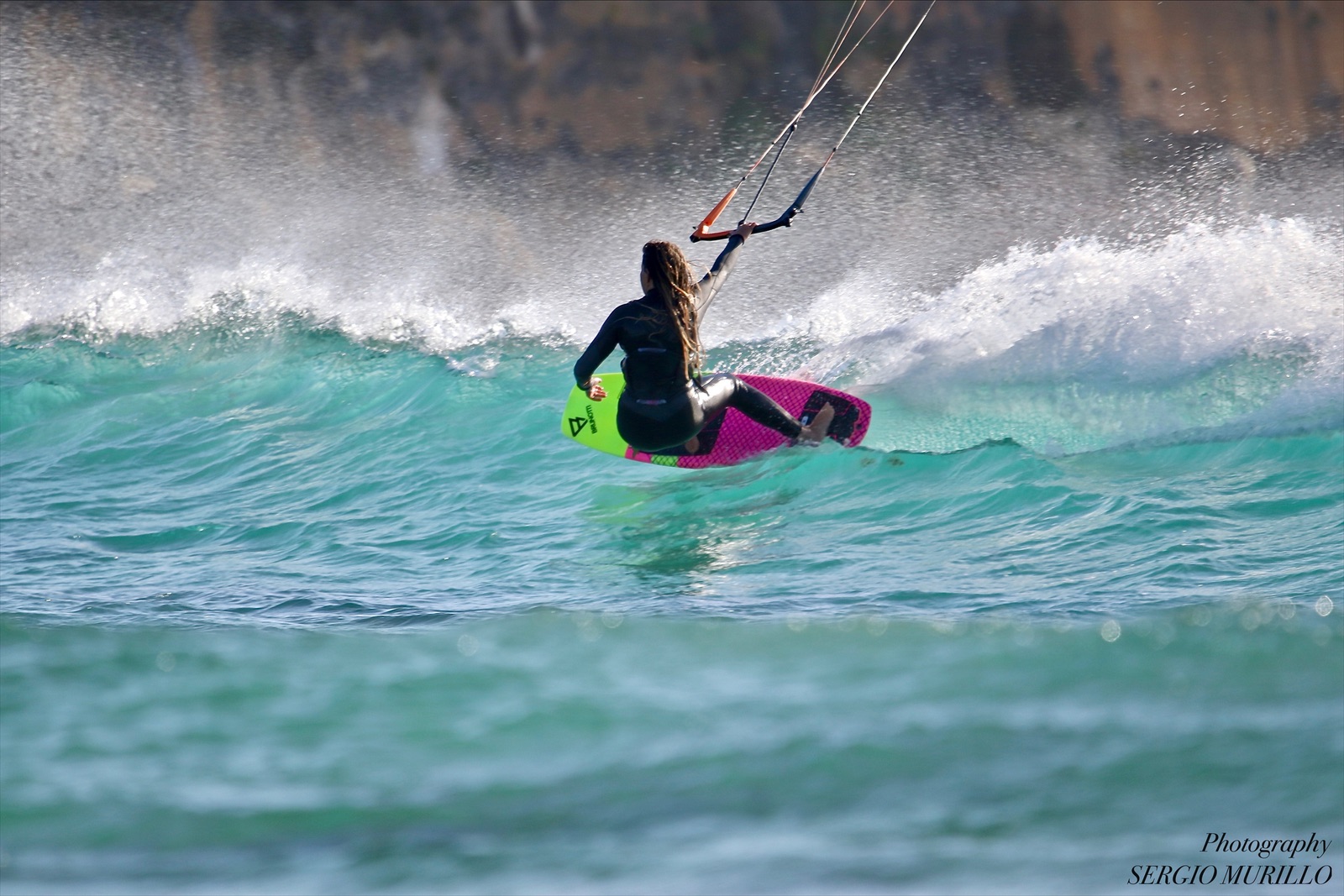
One of the tricky parts if you are new into strapless is the waterstart. You will see a lot of people just standing infront of the board and jumping into it to waterstart.. Thats cool and with sometime, you will be able to do it, but for your first rides it is easier just to do it floating (sitted) on the water as you would do on a tiwntip.
A good advice to go upwind is to keep your stance a bit shorter than on a twintip and keep the weight distribution a bit more to the front than you would do on a twintip. Once you have your waterstart and upwind under control, it is time to go for transitions.
The easiest one is to just make a transition with your kite from one side to the other and going from heel side to toe side. When you want to get back to heel side, the trick is to keep your kite high and press on the front foot hard just before to switch them.
Another transition is the one where you rotate your board but not your body. Just before the transition, you have to go a bit downwind with your kite high and barely without power on your kite. Your front foot rotates the board into your back and wind will make the rest, just change your feets, move your kite and ride away.
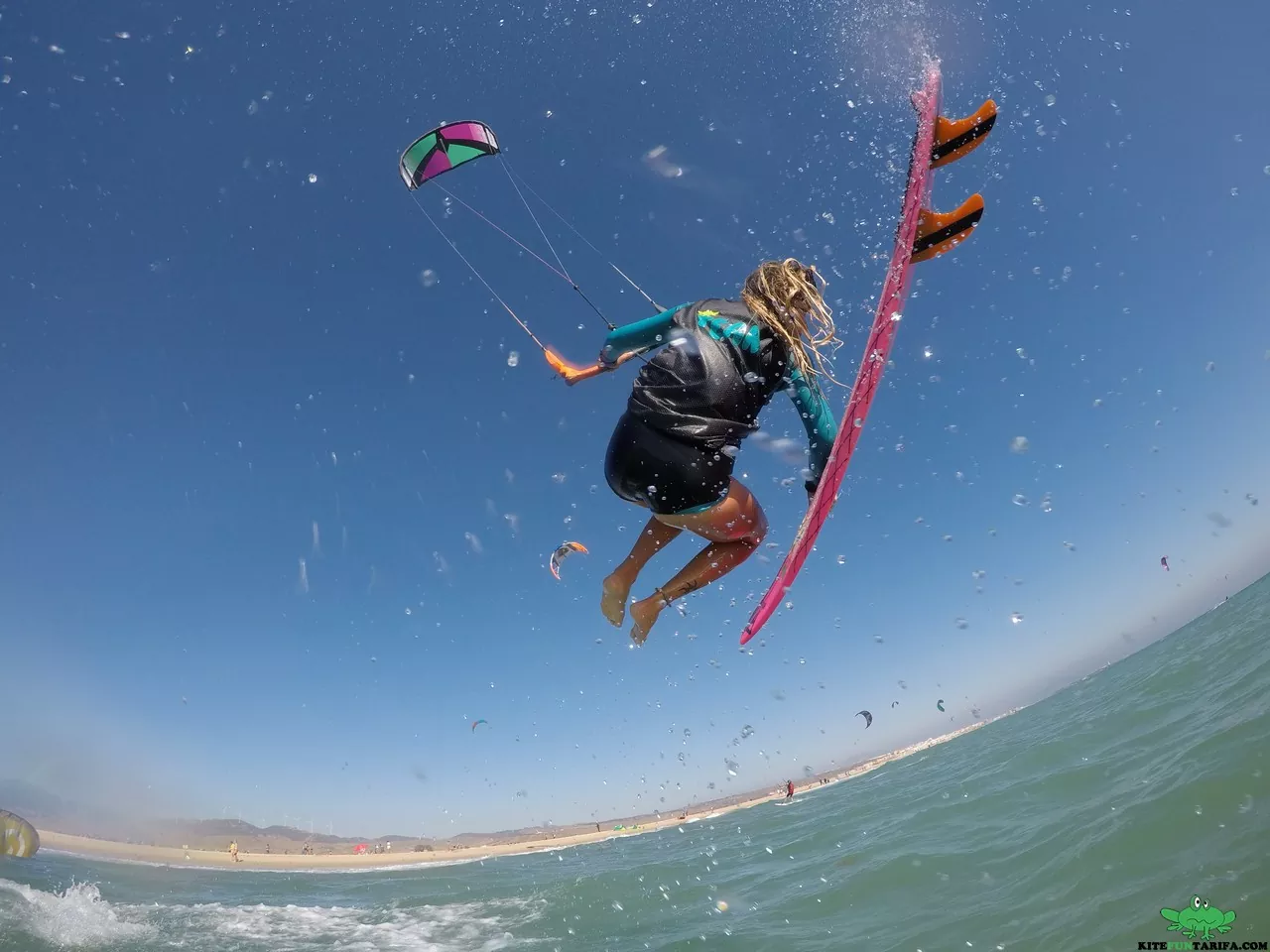
With a couple of transitions on your pocket, it is time to get serious! You should start practicing your pop. For your first tries use a chop! To pop, as you probably know already from twintip, all you have to do is press on your back leg, lift your front and try to put the board as upwind as you can. If you start to get some lift, you will have also to orient your board bottom into the wind.
Next trick to keep progressing would be to jump and grab your board. This time you will use your kite to generate lift (as you do on a twintip). On the take off, it is important to bend your front leg and bring your board to your hand, remember, you dont go to grab your board, your board is going into your hand. On the landing, remember to try to put your back foot on the board first and then your front.
And the last trick to keep you bussy for your next sessions would be a regular jump without using your hands to keep the board. You will use your kite to jump, pop and just after the take off, you have to turn your body and feets into the wind, as it will keep your board pasted to your feets. Bend your legs as much as you can and try to invert your body upside down.
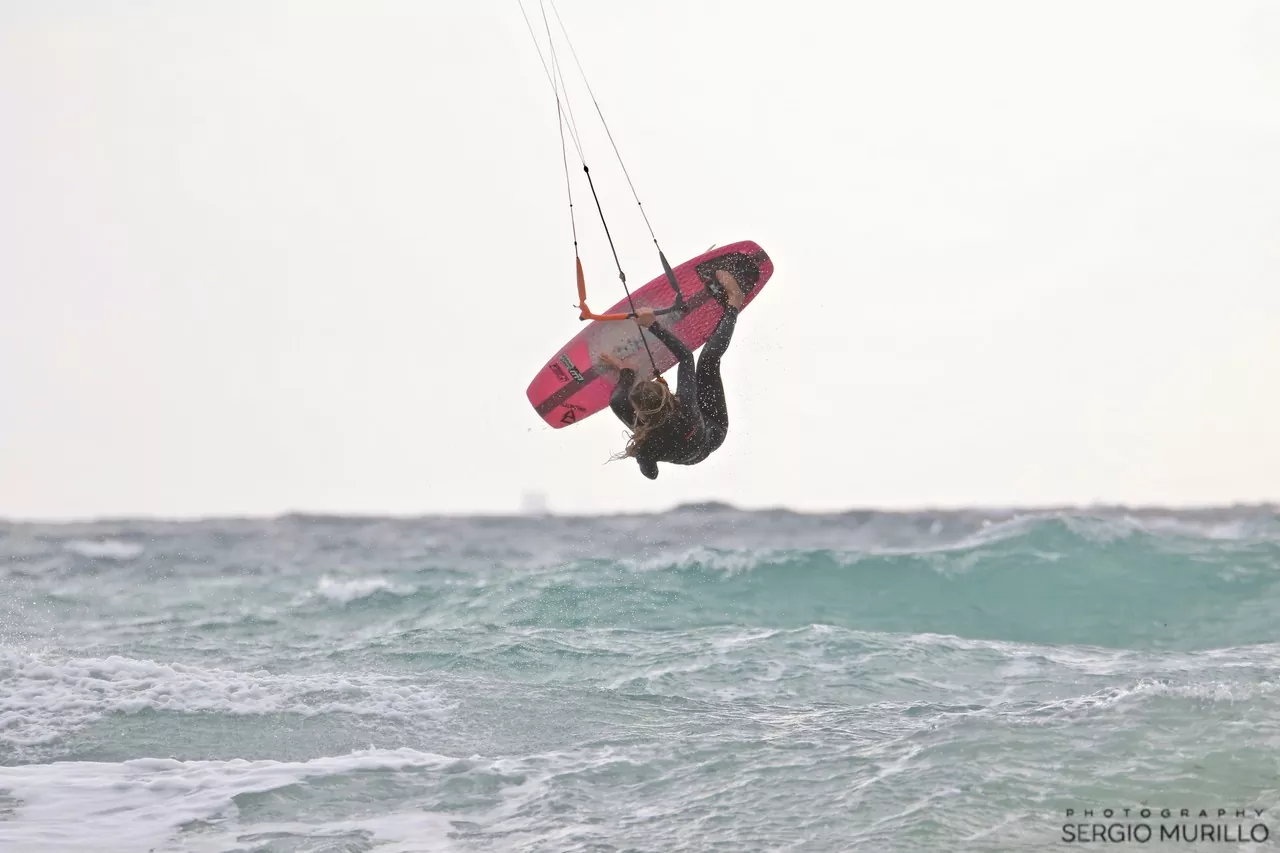
You have a lot of work to do! So, go out there, enjoy and ride as much as you can!

Carla and Rodri, combined experience flying kites of more than 30 years. And a Kitesurf World Championship...🔥